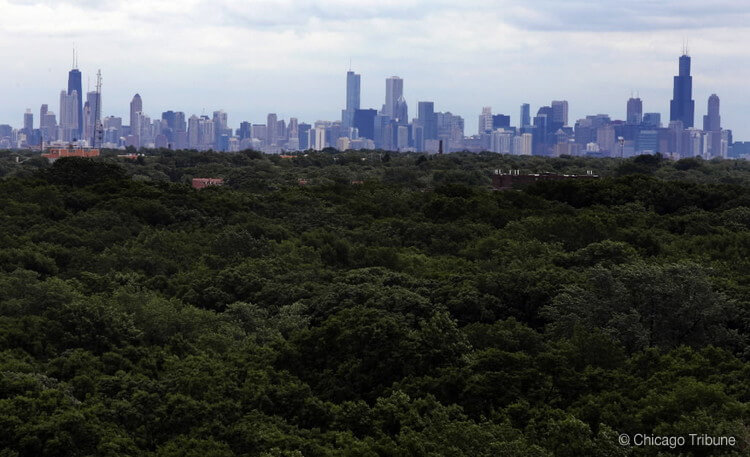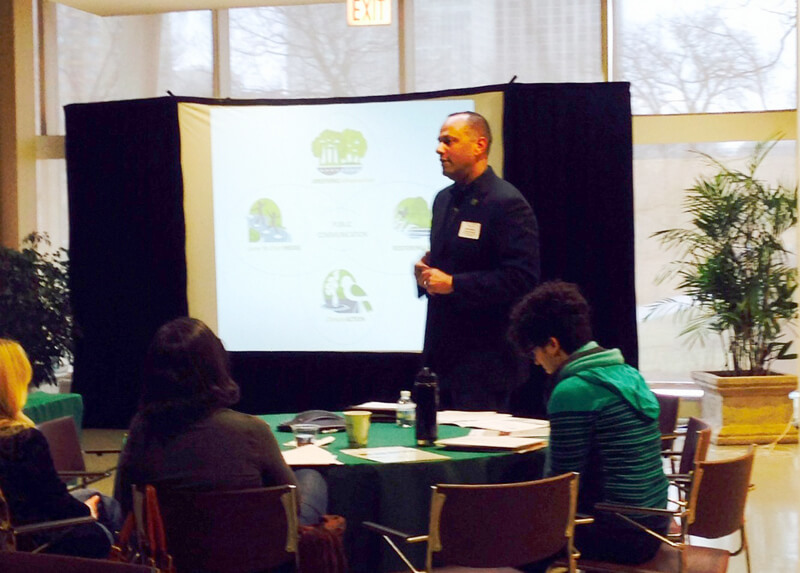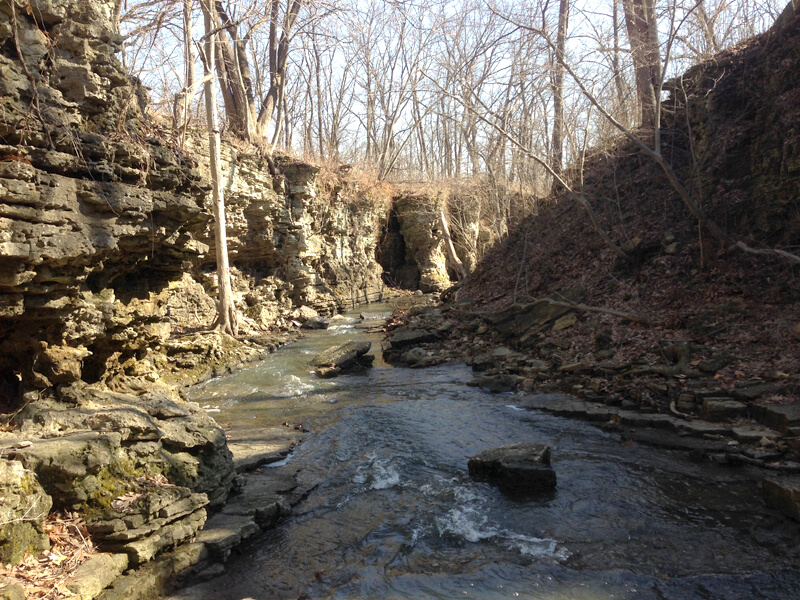The WILD Cities Project is striving to create a new concept of urbanism where nature is a valued aspect of our world’s cities. To accomplish this mission, The WILD Foundation is facilitating the establishment of a global network of urban areas that are committed to advancing polices and urban planning strategies for preserving wild nature in cities. Through its ongoing commitment and visionary approaches to protecting nature in the city and engaging its citizens with unique opportunities to experience these natural areas, Chicago, Illinois has established itself as one of the greatest examples of a WILD City.
Chicago’s commitment to the WILD Cities mission is epitomized by its remarkable Forest Preserve system. The Forest Preserve District of Cook County, Illinois manages more than 68,000 acres of public land, which is about 11% of the total area of Cook County. These lands surrounding the Chicago metropolitan area are a mosaic of nature preserves, oak woodlands & savannas, native wetlands, managed lakes & ponds, and over 300 miles of trails for citizen recreation. This devotion to promoting the existence of wild nature as an integral part of the city environment has made Chicago a model representative for effective urban conservation policy.
Since the launch of WILD Cities at the 10th World Wilderness Congress (WILD10), Chicago has been a valued leader and WILD City Champion, helping to advocate and advance the WILD Cities mission. And to continue to build upon the WILD Cities momentum coming out of WILD10, The WILD Foundation recently partnered with some of the leading urban conservation organizations in Chicago to convene a diverse network of professionals to explore ideas and strategies for further developing and advancing the WILD Cities vision.
On April 4, 2014 The WILD Foundation hosted a WILD Cities Workshop in collaboration with Chicago Wilderness and The Forest Preserve District of Cook County at Chicago’s Peggy Notebaert Nature Museum. This Workshop convened a diverse group of urban conservation and citizen engagement leaders from organizations in Chicago and the surrounding metropolitan area, and also included participants from New York City, St. Louis, San Francisco, and Berlin, Germany. The Workshop participants engaged in a spirited discussion about various strategies and policy mechanisms for effective urban conservation and defining the criteria for what constitutes a WILD City by exploring topics such as: urban green infrastructure & climate change resilience, wildlife & habitats within cities, urban planning initiatives for biodiversity, and connecting urban citizens with nature and wilderness.
Arnold Randall, General Superintendent for the Forest Preserve District of Cook County
The Chicago WILD Cities Workshop also included an opportunity to experience some of Chicago’s wild nature with a guided field trip to one of its Forest Preserve areas. On Saturday April 5th, a group of Workshop participants was led on an excursion to the Sagawau Environmental Learning Center in Lemont, Illinois. Just 40 minutes outside of downtown Chicago, Sagawau is an oasis of nature and wildlife. Our walk through the Sagawau Canyon Nature Preserve featured beautiful forested areas, unique rock formations, and a variety of wildlife species including great blue herons, sandhill cranes, and turkey vultures. It was truly remarkable to experience this wild nature in such close proximity to one of America’s largest metropolises.
Sagawau Canyon Nature Preserve
The Chicago WILD Cities Workshop generated excellent feedback and innovative new strategies for further enhancing the WILD Cities vision, and also allowed for WILD to engage with an extraordinary new group of professionals dedicated to promoting the conservation of wild nature in urban areas. WILD is very enthusiastic about its ongoing relationship with Chicago as a WILD City Champion and key WILD Cities partner, and we look forward to continuing to share Chicago’s outstanding urban conservation model with the international conservation community.




That wildcities initiative needs to spread to other cities/countries
Would like to understand how a citi in India could join the wildcities initiative and how best practice sharing for a more effective wild cities programme is organised
Shashi Kant Sharma, thank you for your comment. WILD Cities strives to be a global network, and we are actively recruiting and working with cities from all over the world.
This global network is forming a collaborative through which they will have the ability to exchange current best practices, methods, and strategies for making cities wilder places to be enjoyed by both wildlife and human communities.
Feel free to email me at daniela@wild.org for more information on WILD Cities.